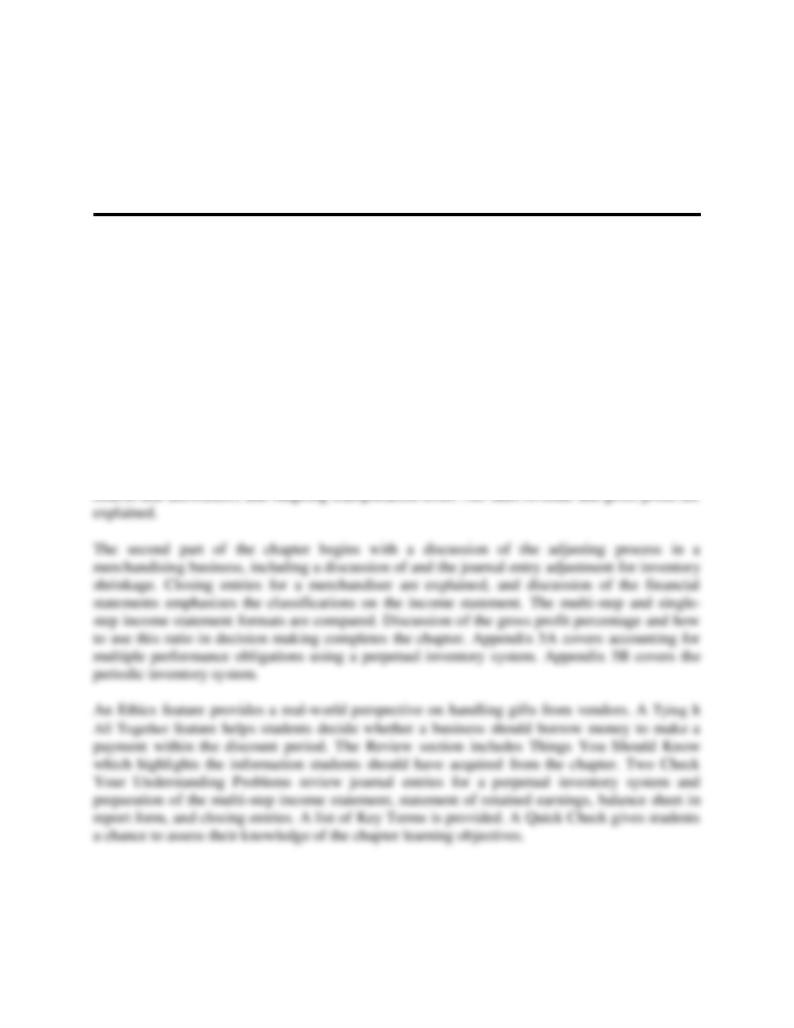
Chapter 5
Merchandising Operations
Chapter 5: Overview
The chapter first compares a service business with a merchandising business, discusses the
operating cycle for a merchandising company, and then illustrates how a merchandiser’s
financial statements differ from a service entity’s financial statements. Next, both the periodic
and perpetual inventory systems are defined. Accounting for merchandise inventory in a
perpetual inventory system is emphasized in the chapter, and the periodic inventory system is
covered in an appendix to the chapter. Journal entries for purchases of merchandise inventory
based on purchase invoices are illustrated, including effects of purchase discounts, purchase
returns and allowances, and transportation costs, for which the terms FOB destination and FOB
shipping point are explained. The calculation of net purchases is detailed. The chapter then
illustrates the journal entries for sale transactions using the new revenue recognition rules. This
requires that companies report sales based on the amount they expect to receive. The chapter
introduces cash and credit sales, cost of goods sold, sales discounts (using the net method), sales

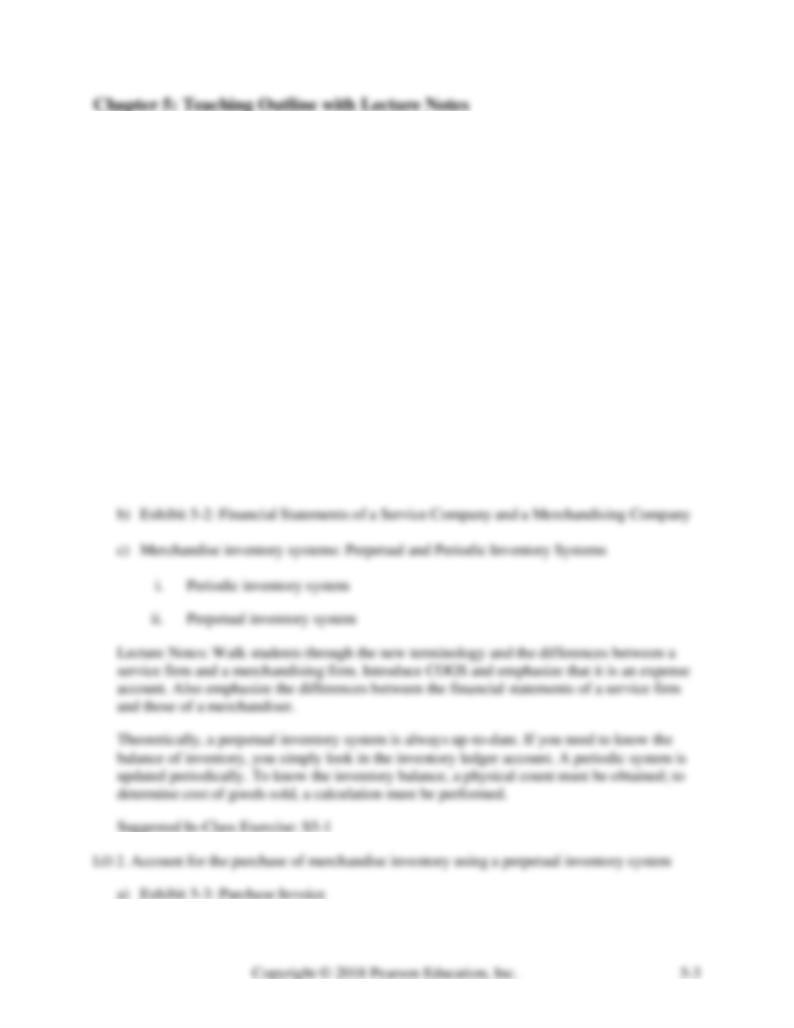
LO 1. Describe merchandising operations and the two types of merchandise inventory systems
a) Review the following terms and give examples of each:
i. Merchandiser
ii. Merchandise inventory
iii. Wholesaler
iv. Retailer
v. Operating cycle (Exhibit 5-1: Operating Cycle of a Merchandiser)
vi. Vendor
vii. Cost of Goods Sold (COGS)
viii. Gross profit
ix. Operating expenses
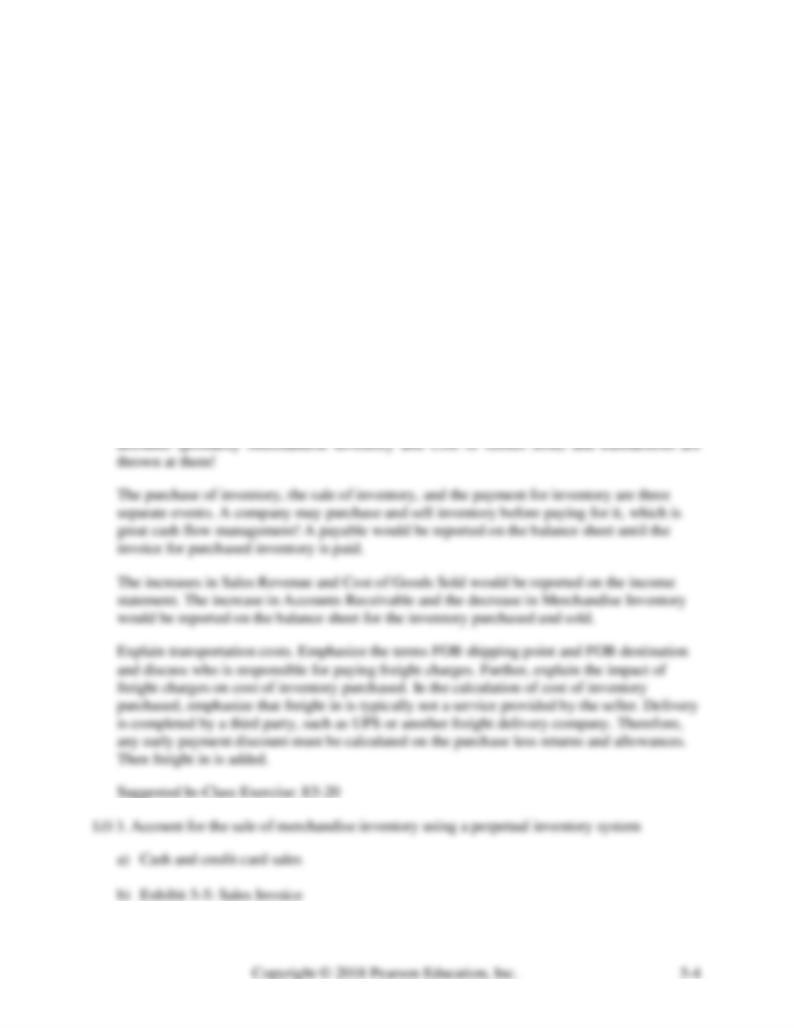
b) Purchase of merchandise inventory
c) Purchase discounts
d) Purchase returns and allowances
e) Transportation costs
i. FOB shipping point
ii. FOB destination
iii. Exhibit 5-4: FOB Terms Determine Who Pays the Freight
f) Cost of inventory purchased
Lecture Notes: As mentioned in the previous lecture outlines, the first obstacle for students in
accounting can be debits and credits; the second obstacle can be adjusting entries; and the
third obstacle can be accounting for inventory. Just when students have the hang of it, new
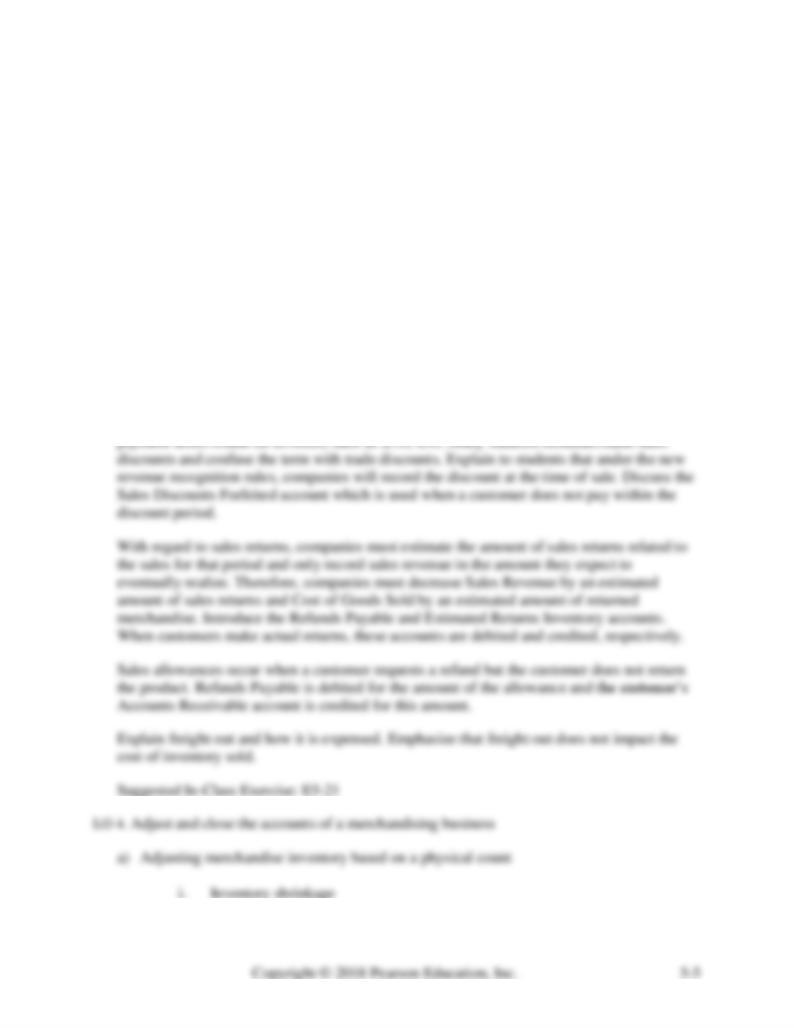
c) Sales on account
d) Sales discounts
e) Sales returns and allowances
i. Estimating sales returns
ii. Actual return of inventory
iii. Sales allowances
f) Transportation costs—Freight out
Lecture Notes: The seller always has two entries for a sale: recording the sales revenue and
accounts receivable or cash at the sales price and recording the inventory and cost of goods
sold at the cost of inventory purchased.
Define sales discounts and emphasize its meaning. Explain how to interpret common
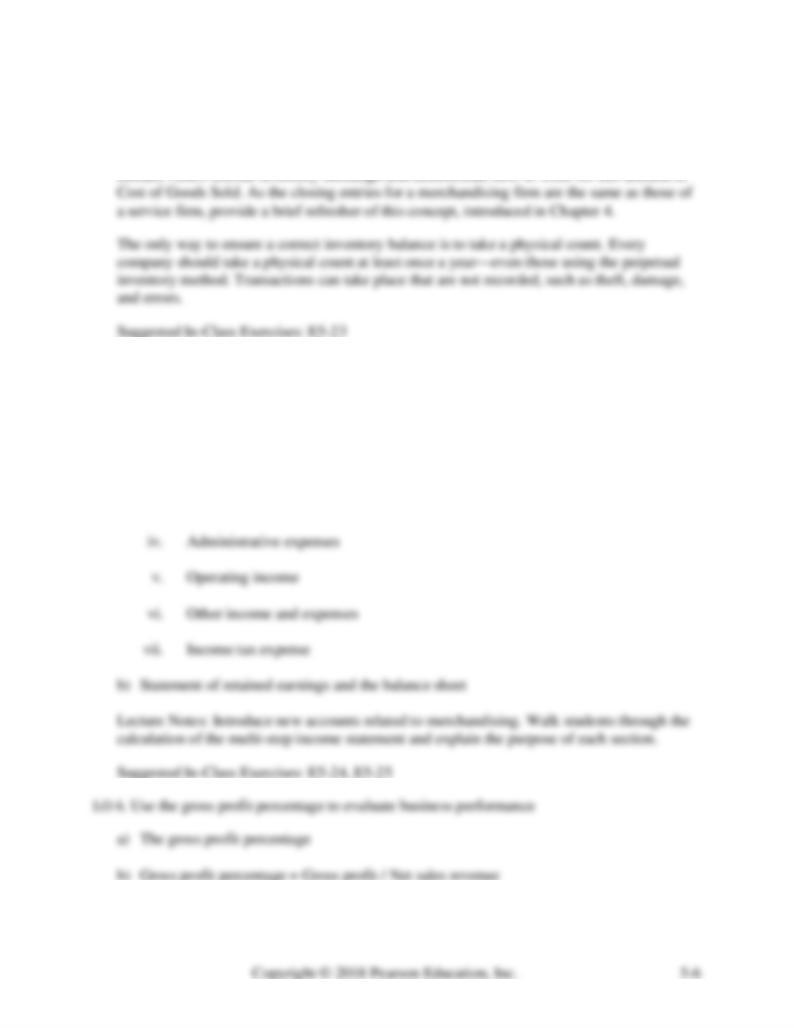
b) Closing the accounts of a merchandiser
c) Exhibit 5-6: Adjusted Trial Balance and Closing Entries
LO 5. Prepare a merchandiser’s financial statements
a) Income statement
i. Single-step income statement (Exhibit 5-7: Single-Step Income Statement)
ii. Multi-step income statement (Exhibit 5-8: Multi-Step Income Statement)
iii. Selling expenses

Lecture Notes: Students may be surprised to see the dollar amount differences between gross
profit and net income. Just because a company has gross profit doesn’t mean it will have net
LO 7. Account for multiple performance obligations using a perpetual inventory system
(Appendix 5A)
Lecture Notes: Remind students that under the new revenue recognition standards,
LO 8. Account for the purchase and sale of merchandise inventory using a periodic inventory
system (Appendix 5B)
a) Purchases of merchandise inventory
i. Purchase discounts
ii. Purchase returns and allowances
iii. Transportation costs
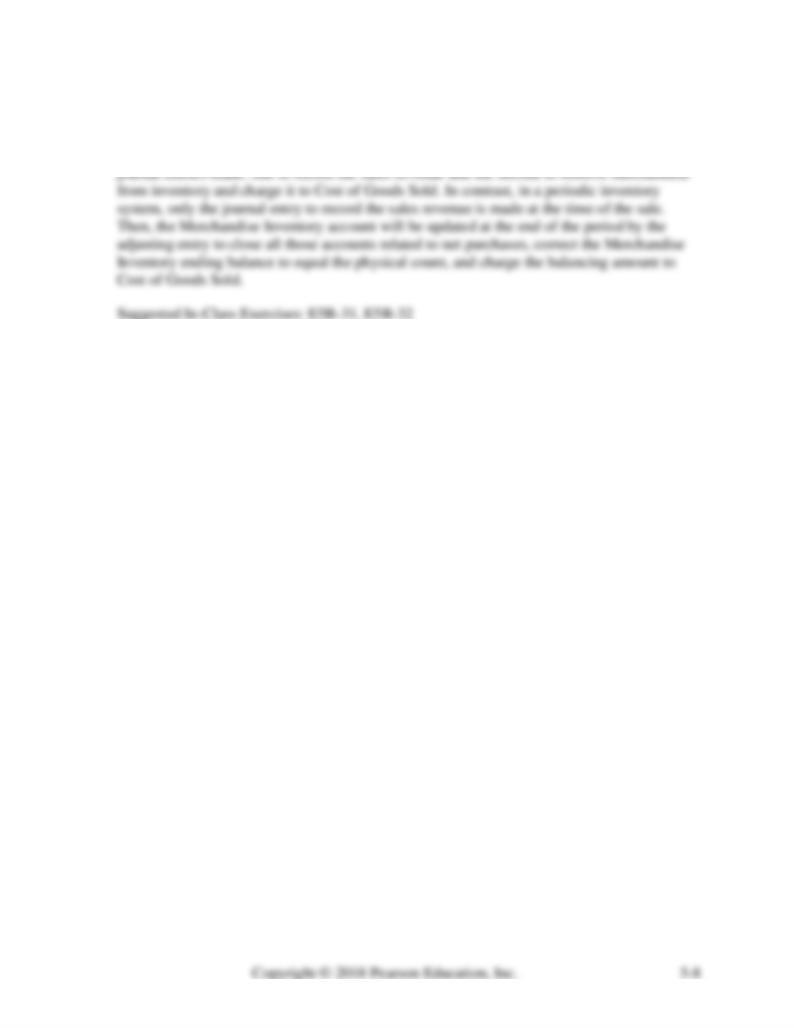
journal entries will affect one of the accounts related to net purchases: Purchases, Purchase
Discounts, Purchase Returns and Allowances, or Freight In.
Furthermore, in a perpetual inventory system, when merchandise is sold, there are two

LO 1. What are merchandising operations?
LO 2. How are purchases of merchandise inventory recorded in a perpetual inventory system?
LO 3. How are sales of merchandise inventory recorded in a perpetual inventory system?

o Sales on account
o Sales discounts
LO 4. What are the adjusting and closing entries for a merchandising business?
LO 5. How are a merchandiser’s financial statements prepared?
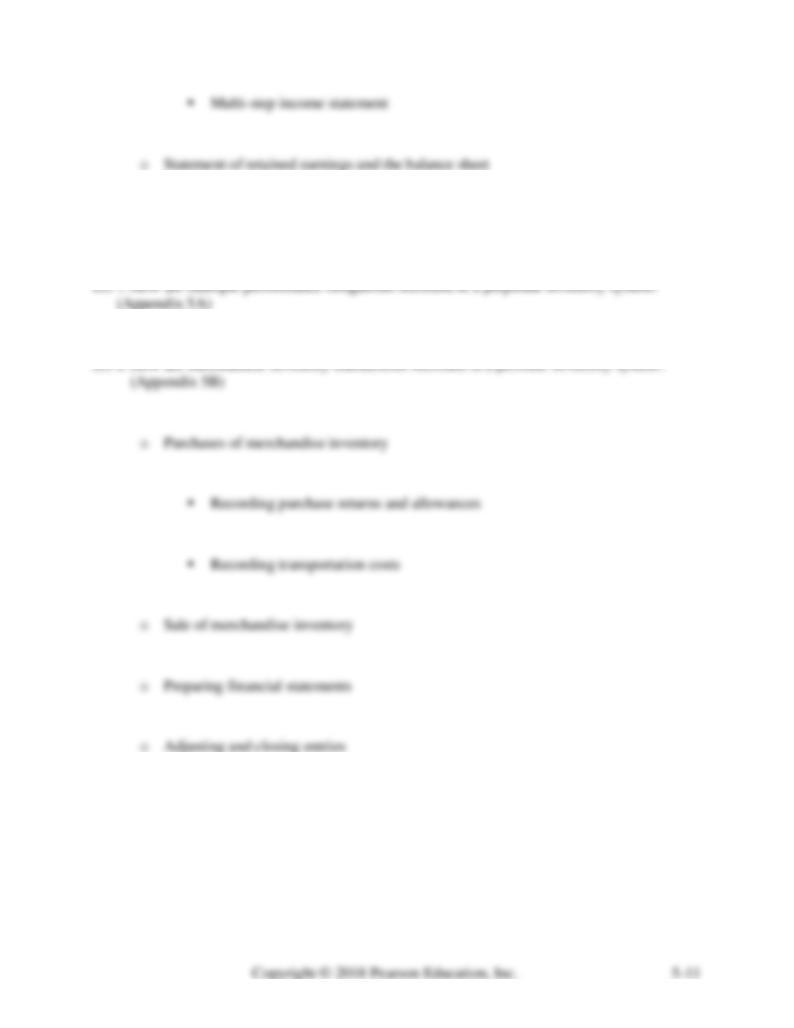
LO 6. How do we use the gross profit percentage to evaluate business performance?
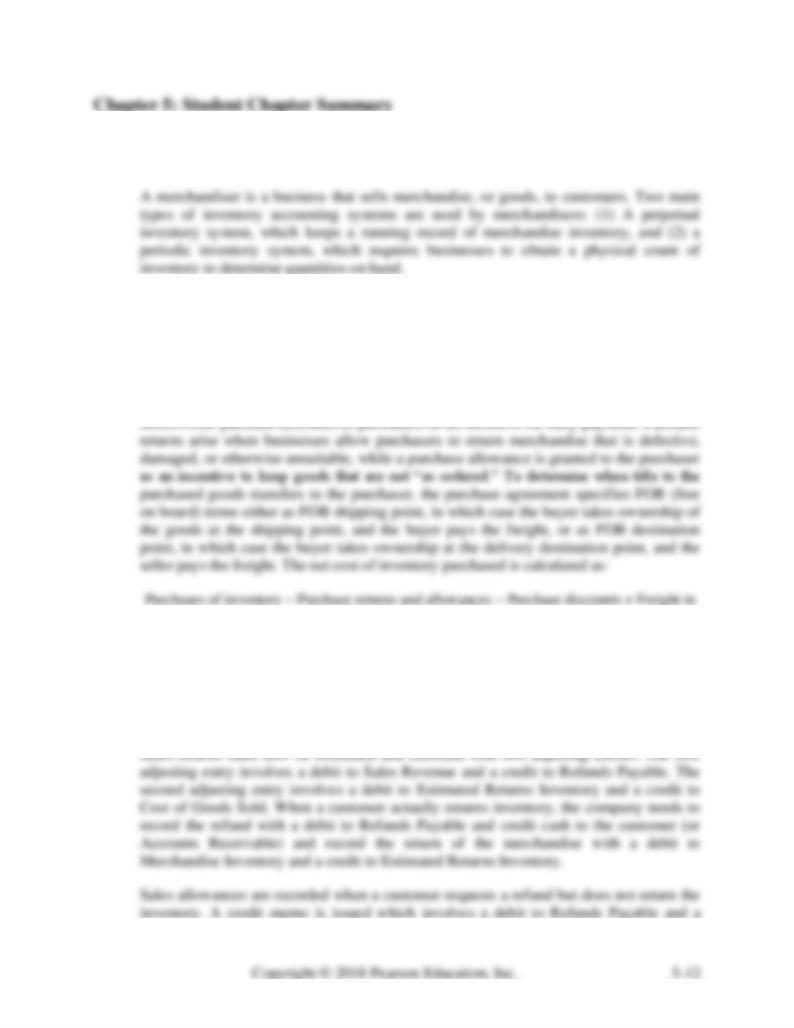
LO 1. Describe merchandising operations and the two types of merchandise inventory
systems
LO 2. Account for the purchase of merchandise inventory using a perpetual inventory system
The operating cycle of a merchandising business begins with purchase of inventory from
a seller. Purchases are documented by an invoice from the seller, requesting payment for
the purchases. Purchase discounts, purchase returns, and purchase allowances decrease
the amount of net purchases, while freight in increases the amount of net purchases.
LO 3. Account for the sale of merchandise inventory using a perpetual inventory system
Sales revenue is the amount that a merchandiser receives from selling its inventory. Sales
discounts, offered by the seller as an incentive for the purchaser to pay early, reduce the
amount of cash received from a customer for early payment. Sales are recorded at the net
amount of the sales less any sales discounts.
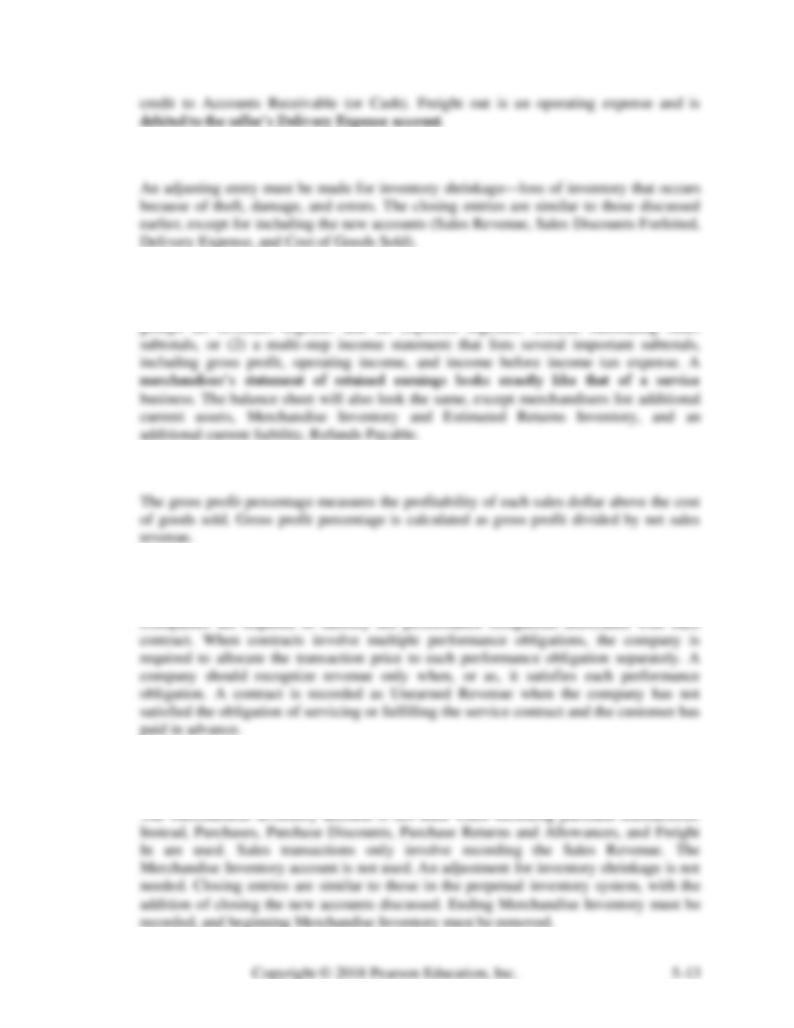
LO 4. Adjust and close the accounts of a merchandising business
LO 5. Prepare a merchandiser’s financial statements
There are two formats for the income statement: (1) a single-step income statement that
LO 6. Use the gross profit percentage to evaluate business performance
LO 7. Account for multiple performance obligations using a perpetual inventory system
(Appendix 5A)
LO 8. Account for the purchase and sale of merchandise inventory using a periodic inventory
system (Appendix 5B)

S5-12
X
S5A-13
X
E5-27
X
E5A-28
X
X
P5-38A, P5-45B
X
X
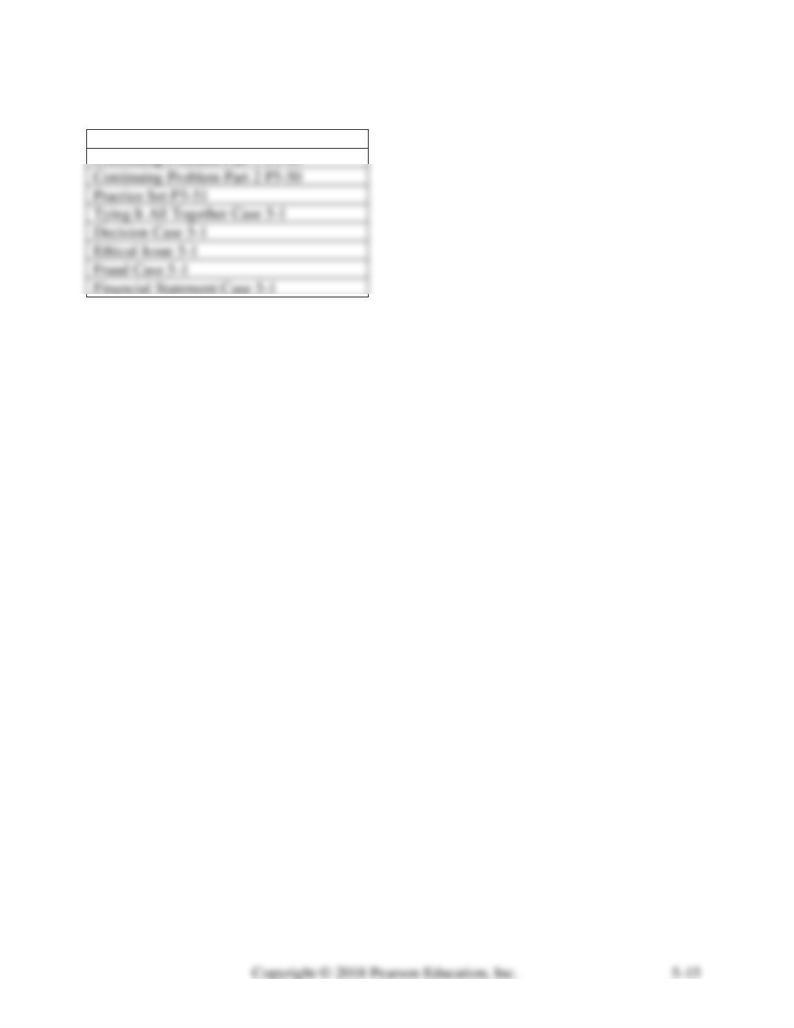
Other End-of-Chapter Materials:
Using Excel P5-48
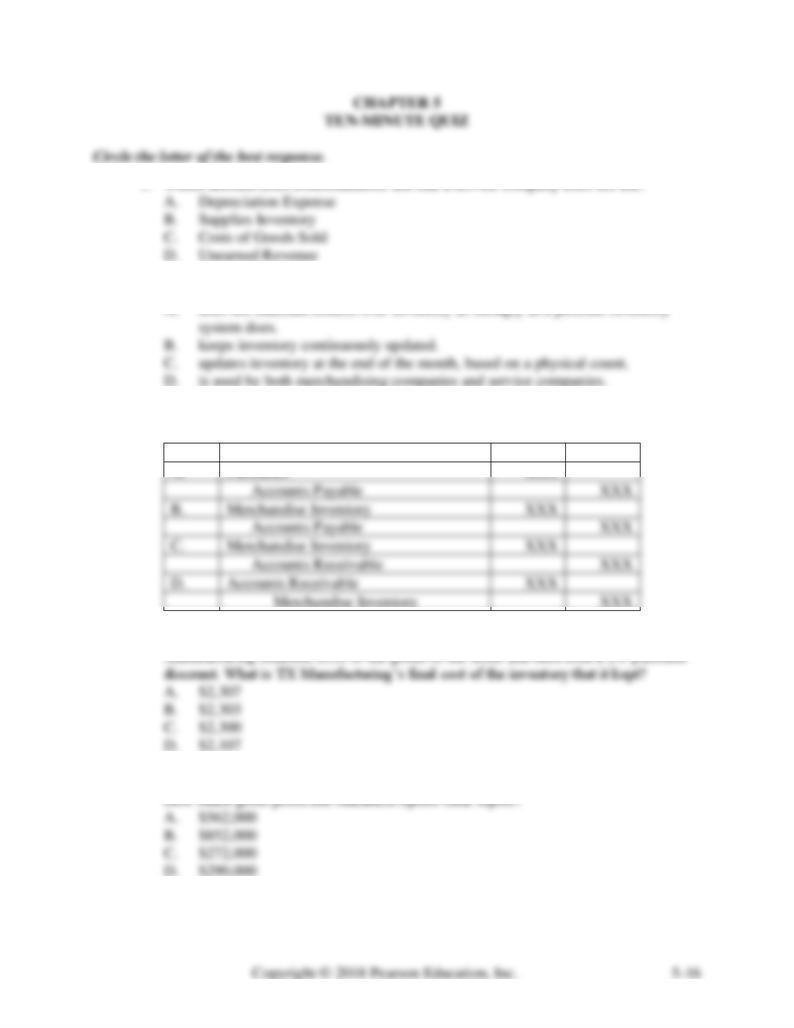
2. A perpetual inventory system
3. In a perpetual inventory system, what is the journal entry for the purchase of
merchandise on account?
Date
Accounts and Explanations
Debit
Credit
4. TX Manufacturing purchased inventory for $2,500 and paid a $200 freight bill. TX
5. Marathon Sports Gear had net sales of $562,000 and Cost of Goods Sold of $290,000.

6. Suppose the Jim’s Jeans Merchandise Inventory account shows an unadjusted balance
of $10,000. On December 31, 2018, the physical count of goods on hand totaled
$9,200. To adjust the accounts, Jim’s Jeans would make which of the following
entries?
7. FOB shipping point refers to the situation in which title to goods in transit rests with
8. Using the perpetual inventory system, which account is used to record the payment of
9. Assume Easy Electronics had Net Sales Revenue of $100,000, and Cost of Goods
10. Discount Dollar uses a perpetual inventory system. Suppose Discount Dollar’s
Purchases totaled $68,000, Purchase Returns totaled $5,200, Purchase Allowances


Extra Critical Thinking Questions
Decision Case 5-2
Stockholders of Poppa Rollo’s Pizza have prospered during the company’s second year of
operation. In order to help with decisions about whether to open another pizzeria, Poppa Rollo’s
Pizza has prepared the current income statement of the business. Jan Lorange, the controller,
read in an industry trade journal that a successful two-year-old pizzeria meets the following
criteria:
a. Gross profit percentage is at least 60%.
b. Net income is at least $90,000.
Lorange believes the business meets both criteria. She intends to go ahead with the expansion
plan and asks your advice on preparing the income statement in accordance with Generally
Accepted Accounting Principles. When you point out that the statement includes errors, Lorange
assures you that all amounts are correct. But some items are listed in the wrong places.
Poppa Rollo's Pizza
Income Statement
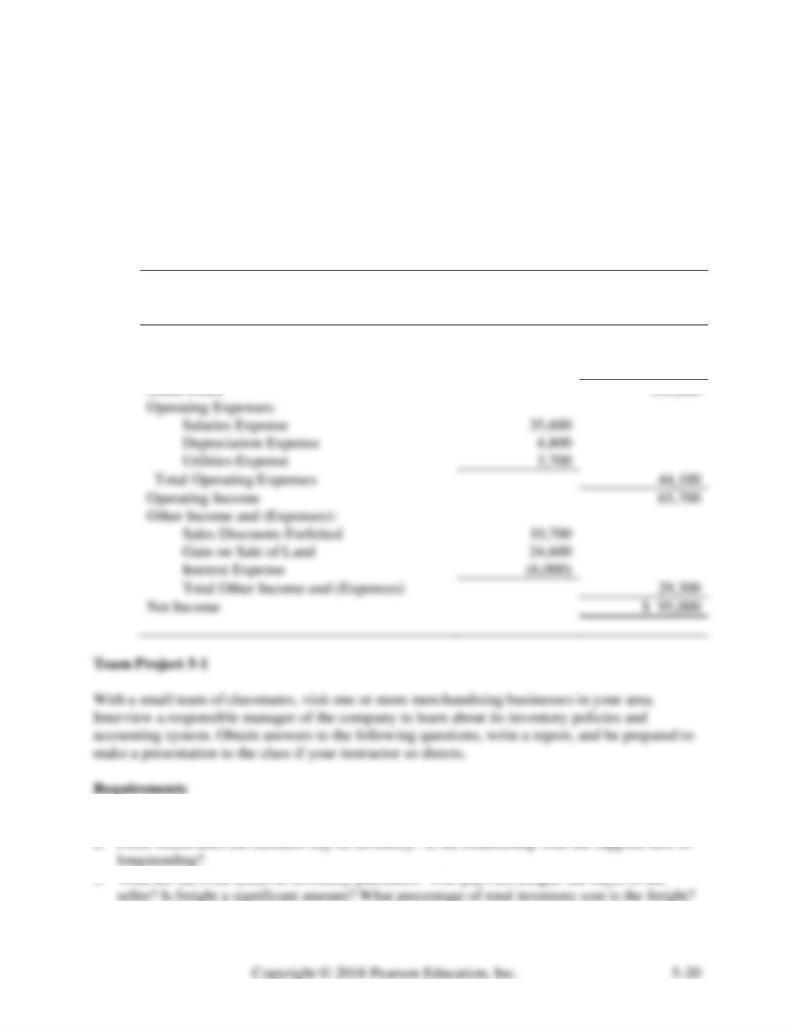
Requirement
Prepare a corrected multi-step income statement and make a recommendation to Lorange about
whether Poppa Rollo’s Pizza should undertake the expansion. Ignore classifying the expenses as
selling or administrative.
Decision Case 5-2: Solution
Recommendation: Jan Lorange should not expand. The gross profit percentage is only 56.3%
($109,800 / $195,000), which does not meet the criterion of 60%. The net income is $95,000,
which does meet the criterion of $90,000.
POPPA ROLLO’S PIZZA
Income Statement
Year Ended December 31, 20XX
Net Sales Revenue
$ 195,000
Cost of Goods Sold
85,200
1. What merchandise inventory does the business sell?
4. What are the credit terms on inventory purchases: 2/10, n/30, or other? Does the business pay

early to get purchase discounts? If so, why? If not, why not?
9. Ask any other questions your group considers appropriate.
Team Project 5-1: Solution
Students will be visiting different companies, so their answers will vary.
Communication Activity 5-1